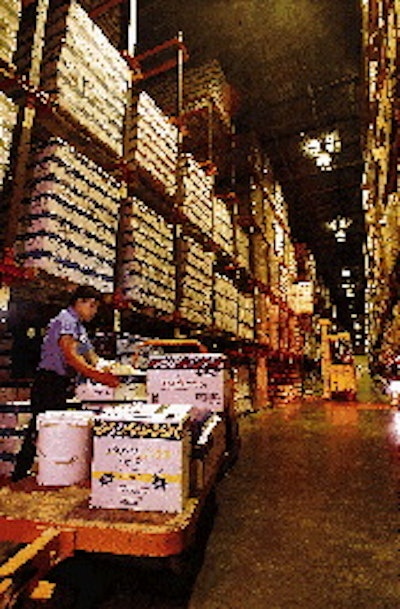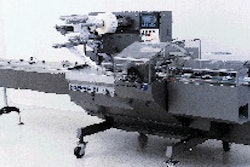They were the two weeks from hell. Inspectors from the Occupational Safety & Health Administration's Houston office burst into one of the 60 operating companies at Sysco Corp., Houston, TX, and told officials that an ergonomics investigation was underway. "We are going to make an example of you," the OSHA officials said before carrying in their video cameras and other surveillance equipment. Sysco seemed a strange company to pick on. Jeff Wagner, director of safety and security at Sysco, explains that the foodservice supplier had instituted a process called Sysco Safe in January 1995. Currently in its second revision, Sysco Safe has achieved a 50% reduction in injuries across the company's operations that have instituted it. The process involves all employees in an effort to develop the safest possible work method for each job. Moreover, some of those operating companies had obtained third-party safety audits, some more than once a year, from the American Institute of Baking Safety Services in Manhattan, KS. These voluntary safety improvement efforts sometimes involved pressuring suppliers for "better"-that is, easier to handle and lift-packaging. It is not unusual at Sysco for individual operating company presidents to jointly sign letters to suppliers requesting them to change packaging to enhance customer service and reduce injury frequency. OSHA overkill? It is the perceived overuse of the billy club by OSHA inspectors at presumably conscientious companies like Sysco that has fueled anti-OSHA legislation in the past few Congresses, and is doing so again. OSHA dumped a whole tanker of fuel on the fire November 25, 1997. New OSHA Administrator Charles Jeffress announced letters were going out to 12곚 "bad safety record" companies, giving them 45 days to decide whether to participate in a "voluntary" OSHA compliance program. If the companies decline, they will be placed on a list to be inspected in the near future. OSHA's perceived over-aggressiveness helps explain why the SAFE Act (S. 1237), the latest iteration of OSHA overhaul legislation, passed the Senate Labor and Human Resources Committee by a party-line vote of 10-8 on October 22, less than one month after it was introduced. Sen. Mike Enzi (R-WY) is the chief sponsor. SAFE stands for Safety Advancement for Employees. Democrats on the committee offered nine amendments, all of which were defeated. A companion bill has been introduced in the House (H.R. 2579) by Rep. James Talent (R-MO), chairman of the House Small Business Committee. The bill will come to a vote early in 1998 in the House Education and Workforce Committee, according to Kristin Young, Rep. Talent's press secretary. Business groups almost across the board support the SAFE Act: the National Federation of Independent Business, the U.S. Chamber of Commerce, the National Assn. of Manufacturers, the American Society of Safety Engineers and so on. Tim Hammonds, president of the Food Marketing Institute, likes many of the provisions in the bill. He specifically cites the third-party audit provision; allowing employer/employee safety committees; requiring OSHA rules to be reviewed by an independent scientific review committee; and eliminating fines for paperwork violations unless "willful" or "repeated." The SAFE Act is a softening of anti-OSHA bills introduced in the last Congress by Republicans. For example, the previous Senate bill (S. 1423) included an exemption from inspections for businesses that had either a third-party audit or an exemplary safety record. The 1996 House bill (H.R. 3234) had a prohibition against OSHA issuing citations for non-willful, first-time violations of any record-keeping or written program requirement unless the violation exposed an employee to danger. Audits provide exemption The SAFE Act allows OSHA to continue to inspect any workplace it chooses. However, any company that obtained a third-party audit would be exempt for two years from civil penalties stemming from an OSHA inspection. First, though, the company would have to take any remedial action dictated by the audit. Third-party audits in and of themselves are hardly controversial; OSHA already offers the "first cousin" to a third-party audit. The agency pays for specially trained state government employees in all 50 states to go to mostly small businesses that ask for a "consultation." The visit is free. Sometimes a company asks for a full-blown audit. In that instance, if the company agrees to fix any problems turned up by that audit, the firm is then exempt from an OSHA inspection for one year. That service is extremely popular, and the waiting line stretches around the country. Susan Fleming, an OSHA spokeswoman, says that there were more than 21ꯠ requests for free consultations in fiscal 1997. At press time, 9ꯠ requesters were still waiting for a visit. Who wants them? Fleming points out that a two-year exemption from civil penalties would be considerably more generous than the one-year inspection hiatus OSHA now offers. Moreover, she claims there has been minimal support for the third-party audit concept during stakeholder hearings the agency has held. When the Senate committee passed the Enzi-sponsored bill, the Clinton Administration issued a statement under the name of Labor Secretary Alexis Herman (who has authority over OSHA) saying some provisions "would undermine OSHA's self-improvements, while also eliminating significant protections and safeguards." The long waiting line for the free OSHA consultations chips away at Fleming's argument that businesses don't want third-party audits. There may be some truth to her theory, though, especially among smaller companies, who might think twice if they had to pay for a visit. But money spent on a third-party audit can be a gold mine of an investment. A success story The dividends have been impressive at Mon Valley Petroleum in McKeesport, PA. In 1994, the company paid about $3ꯠ to Three Rivers Health and Safety, Inc., a Pittsburgh consulting firm. Three Rivers conducted an audit that eventually reduced injury rates to one in 1997 from five in '94. Lost work days plummeted to zero from 27. As a result, according to Bob Cornell, director of operations at Mon Valley, the company has subsequently saved about $15ꯠ in workmen's compensation premiums. The difference between the SAFE Act third-party audit provision and the current OSHA consultation program seems closer to a good-size pavement crack than the Grand Canyon. Sen. Enzi and other Republicans hope Jeffress, the new OSHA administrator, will bring the two sides together. At his confirmation hearings in the Senate, Jeffress sounded open to negotiations.
























